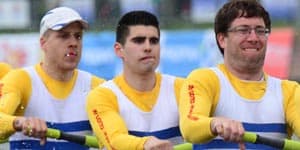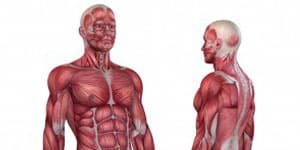Although sweep rowing has a relatively low rate of injuries, certain health issues are distinguished. Asymmetric movement, while rowing, might lead to muscle asymmetries, muscular imbalance and as a consequence, to injuries.
 Parkin et al. (2001) recruited 39 males, of whom 19 were sweep rowers and 20 controls, in their study to assess whether asymmetry in the strength of the leg and trunk muscles is different in the studied groups. The age of the oarsmen was 21.2 ± 2.1 (years, mean, SD) and they had rowed for 6.2 ± 3.1 years (mean, SD). They all had rowed at national level, 17 of them at junior internationals. The age of the 20 controls was 21.0 ± 4.6 years (mean, SD). The subjects performed various isokinetic and isometric strength tests. Comparisons were made between and within groups for right and left symmetry patterns, hamstring-quadriceps ratios and trunk flexor-extensor rations.
Parkin et al. (2001) recruited 39 males, of whom 19 were sweep rowers and 20 controls, in their study to assess whether asymmetry in the strength of the leg and trunk muscles is different in the studied groups. The age of the oarsmen was 21.2 ± 2.1 (years, mean, SD) and they had rowed for 6.2 ± 3.1 years (mean, SD). They all had rowed at national level, 17 of them at junior internationals. The age of the 20 controls was 21.0 ± 4.6 years (mean, SD). The subjects performed various isokinetic and isometric strength tests. Comparisons were made between and within groups for right and left symmetry patterns, hamstring-quadriceps ratios and trunk flexor-extensor rations.
No left or right asymmetries were discovered in leg muscles in neither group. Knee extensor strength was significantly greater in rowers but no difference was noted between the groups for knee flexors and for the hamstring-quadriceps strength ratio. Stroke side had no influence on leg strength for rowers. Additionally, no differences were seen in the isometric strength of the trunk flexors and extensors between the groups, although EMG activity was significantly higher in the rowing population. Nevertheless, patterns of asymmetry of muscle activity were observed between the left and right erector spinae muscles which were significantly related to rowing side (p < 0.01). These findings might be related to lower back pain in oarsmen.
What to learn from this?
Although no asymmetries were found in leg muscle strength, patterns of asymmetry were observed in the activity of erector spinae muscles. Therefore, an additional training of the weaker body side is suggested to prevent athletes from injuries.
Source
Parkin S, Nowicky AV, Rutherford OM, McGregor AH. Do oarsmen have asymmetries in the strength of their back and leg muscles? Journal of Sports Sciences 2001; 19: 521-526.

